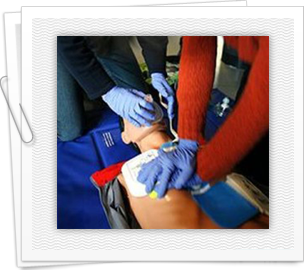Online CPR Certification Blog
CPR procedure as follows
Date: September 27th, 2013
 The AHA (American Hearts Association) believes that the CPR guidelines cam impact positively once they are put in place. The guidelines are meant to improve the skills of the bystanders issuing CPR to the victim. It main objective is to make it simpler for normal people to understand the procedure and perform it effectively. The expert report confirms that the guidelines, released in 2005 by AHA, can significantly increase rate of survival among victims who suffer from cardiac arrest while outside hospital settings.
The AHA (American Hearts Association) believes that the CPR guidelines cam impact positively once they are put in place. The guidelines are meant to improve the skills of the bystanders issuing CPR to the victim. It main objective is to make it simpler for normal people to understand the procedure and perform it effectively. The expert report confirms that the guidelines, released in 2005 by AHA, can significantly increase rate of survival among victims who suffer from cardiac arrest while outside hospital settings.
Adoption and Impact of guidelines in Colonie
There is a follow up on how the guidelines will impact and its efficiency. This is to be done by an associate professor of emergency medicine based at Albany Medical College known as Dr. Dailey Michael. The presentation is meant to clearly spell out the significance and effectiveness of issuing out the guidelines in the first place.
Dr. Dailey is also the director of EMS (Emergency Medical Service) for Colonie town, New York. The town has a population of about 80,000 people. The doctor said that issuing the outline on how CPR should be performed back in the year 2006 was a good initiative. This is because it resulted in survival rates quadrupling over a span of 3 years in the community where he serves as medical director of the EMS. This was a massive improvement showing that the guidelines were indeed effective and the initiative by AHA to increase survival rates was becoming possible and achievable.
The guidelines were implemented using various methods. This included the enlargement of CPR training base in relation to ‘CPR Anytime’ format belonging to AHA. The number of Colonie residents to have taken part in training using the guidelines since inception of the program is about 200 annually. This is according to the doctor who has witnessed this turn of events ever since the year 2005.
Recommendations cited in the AHA guidelines
Furthermore, the residents of Colonie have adopted other recommendations issued by the Americans Heart Association (AHA). They include
- Making threshold devices more imminent. This particular suggestion in its own way helps increase the supply of blood to both the brain and heart during the procedure. It will increase survival chances and in the process minimize the chances of the victim suffering from mental problems once they are out of the situation.
- The guideline also encourages an increase is pace when deploying devices meant to carry out the procedure. Every second is very important and can contribute to either saving or losing a life of a cardiac arrest victim.
- The time spent to respond during emergency should be improved through bringing it down to a minute or less. This means that bystander CPR administers should act quick noting the every second that passes by reduces chances of survival.
- There should be at least two minutes of CPR performed prior to using defibrillation
- Preference for high quality CPR before applying any other treatment such as IV access and advanced airway placement. This is very important as the quality of CPR performed greatly determines the rate of success achieved in such cases.
The doctor concluded by saying that his town has opened up three level one centers for patients suffering from cardiac arrest. The rate of survival has impressively gone from 4% in 2005 to 22% in 2009.